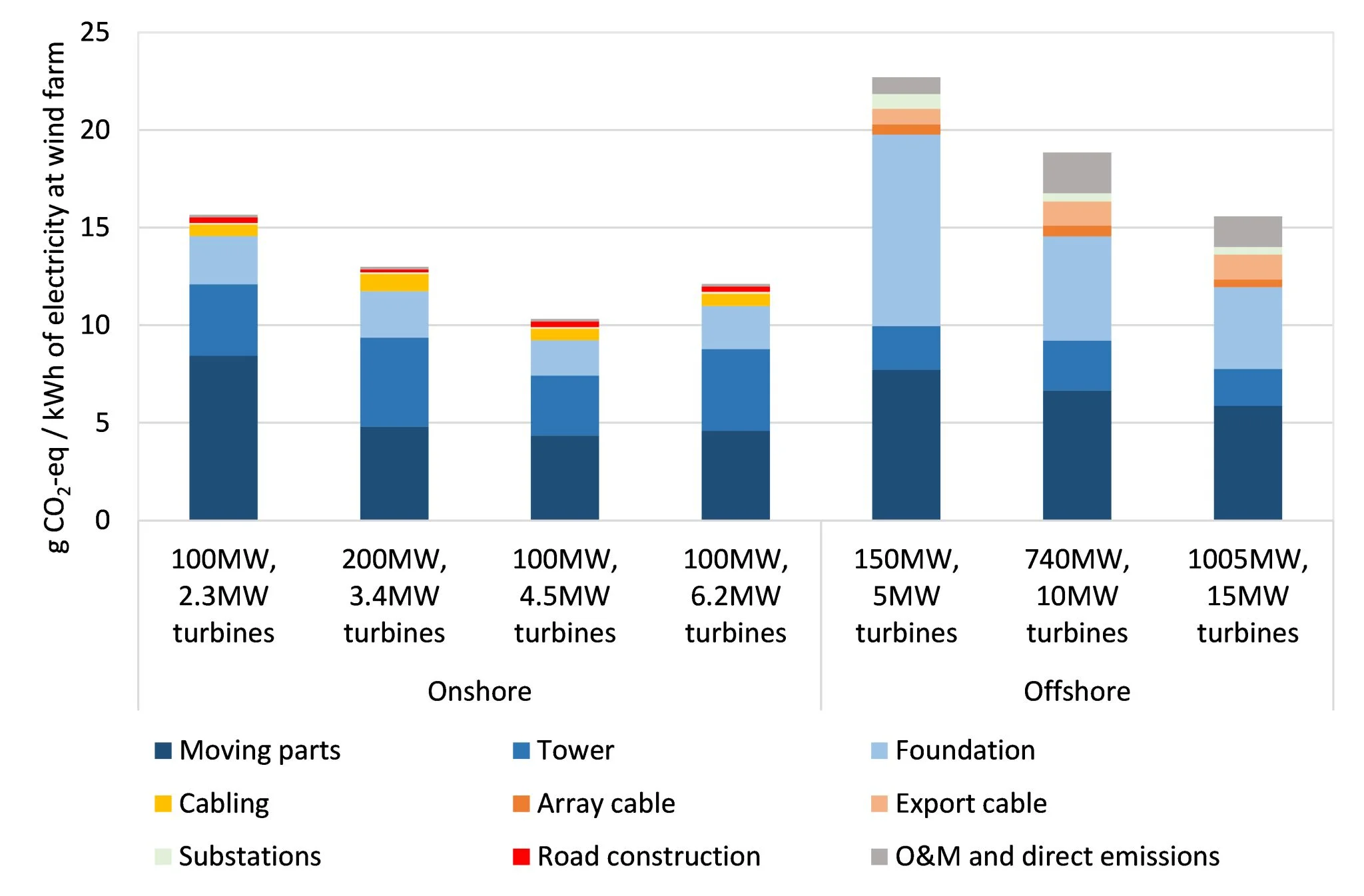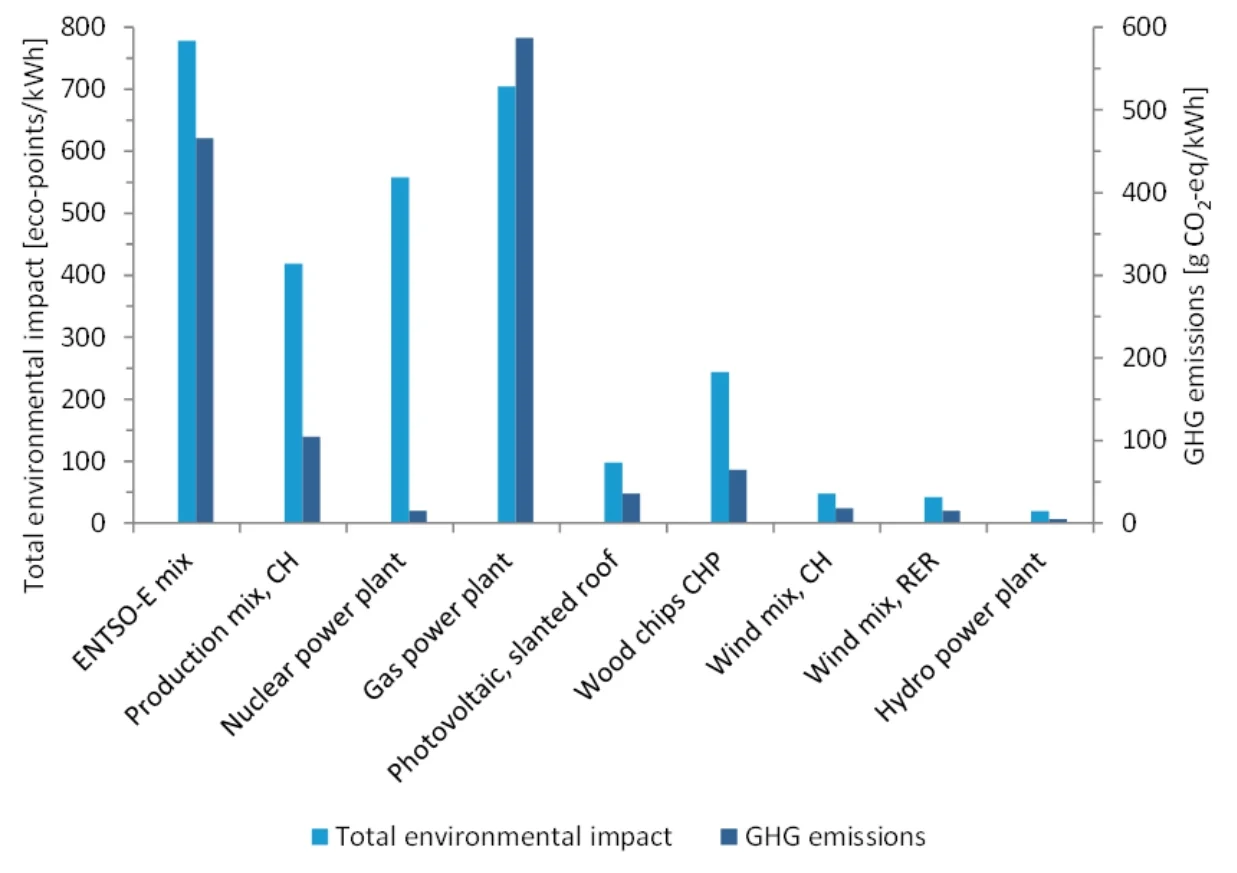From Turbine to Grid: Comprehensive Life Cycle Inventories of Wind Electricity in 2025
Wind energy plays an important role in the worldwide energy transition. In this context, an accurate account of the CO2-emissions and other environmental impacts caused by wind electricity is essential for a sound comparison with other sources of renewable energy. A recent report by the ZHAW Life Cycle Assessment research group documents an up-to-date life cycle inventory of the current state of the technology.

According to the final report of the project “Life Cycle Inventories of Wind Energy – Electricity generation from onshore and offshore wind farms for the Swiss and European context.” greenhouse gas emissions from wind electricity range between 10.4 and 22.7 g of CO₂-eq per kWh (see first graph). Offshore wind generally exhibits higher impacts due to vessel activities, even though it benefits from higher capacity factors. The Swiss wind electricity mix yields 18.1 g CO₂-eq/kWh, which is higher than the European average of 14.9 g CO₂-eq/kWh. This difference is primarily due to lower capacity factors and smaller turbine sizes in Switzerland. The results further show that the total environmental impact and cumulative energy demand for the Swiss mix are 13–16% higher than for the European mix.

The comparison with other technologies shows that wind energy remains among the power generation technologies with the lowest impact on climate change as well as the lowest total environmental impact according to the environmental scarcity method (see second graph).

The study was commissioned by the Bundesamt für Umwelt BAFU and the Bundesamt für Energie BFE. The ZHAW research group Life Cycle Assessment developed a comprehensive set of 39 new datasets that reflect current wind power technologies. These datasets include detailed inventories for infrastructure components such as blades, towers, foundations, substations, and cables. The work also provides models for the electricity production at wind farm level along with aggregated wind electricity mixes for Switzerland and Europe.
The updated inventories will replace outdated models in the Swiss LCI database and improve the representativeness of wind power data. They aim to support more accurate life cycle assessments and thus provide a robust foundation for policy decisions aligned with climate goals and energy transition strategies. Furthermore, the inventories and results will be shared with the new IEA Wind Task 60 CYCLEWIND to foster harmonization of LCA in the field.